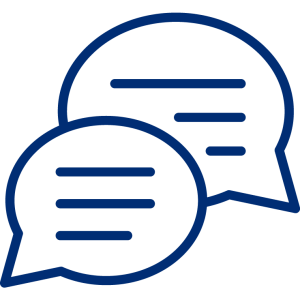The Johns Hopkins Institute for Education Policy offers customized analysis and evaluation techniques to address myriad research questions.
We have a team of expert researchers with deep quantitative and qualitative experience and a wide understanding of education issues. Our research projects are always rigorous and calibrated to meet the specific needs of our partners. Our research team will work with you to determine and answer your most pressing research questions so that you can make evidence-based decisions to achieve educational excellence.
Research Methods
We conduct rigorous quantitative studies to evaluate outcomes of educational programs, and we utilize qualitative methods to study what factors contributed to those outcomes.
In one recent project, we partnered with a curriculum designer to understand the process of implementing a new curriculum. We used matching techniques to compare students from a neighboring area with similar school and student demographics. After controlling for differences between the two student groups, we were able to estimate the impact of the new curriculum on student outcomes. We also surveyed teachers, observed classrooms, and conducted administrator and teacher interviews, generating a more holistic understanding of what was happening in these schools and why.
Custom Research Projects
IEP’s research team works with partners to design custom research projects. For example, we have conducted the following tailor-made projects for partners:
- The Homeschool Hub, an interactive online map that provides users with easy access to current homeschool information and downloadable data for all fifty states plus the District of Columbia.
- A recent evaluation of supplemental math materials, including a customized survey of the teachers utilizing the materials, a detailed evaluation of the materials, and a proposal for a rigorous efficacy study based on the preliminary findings.
- A study of a new teacher training model, including a customized teacher survey, classroom observations, and analysis of administrative data collected in the first year of model implementation, with future years proposed.
- A study of two districts’ journeys towards student acceleration in post-COVID learning environments, including classroom observations and analysis of student academic outcomes pre- and post-COVID.
Classroom Observations
Classroom observations are an important qualitative tool that can be used to provide context and texture to quantitative findings. They describe the how of an intervention. We often design observations to work in tandem with our Teacher Survey of Curriculum Use and other existing tools, but we can also custom design observations to meet the needs of each individual research project.
Example of an Observation Project
Longitudinal district study of the implementation of new English language arts curriculum in elementary grades.
Teachers were surveyed on their curriculum use multiple times, and then classroom observations were combined with these data to provide a better picture of real time classroom-level implementation of the curriculum. Findings indicated that while teachers said they used the curriculum often, there was great variance in the amount of actual use observed in the classroom. Further, there was improvement noted between the first and second year of implementation as teachers became more adept with the curriculum.
Focus Groups
Focus groups help uncover community impressions about the conditions of schooling and school culture from teachers, principals, parents, and other stakeholders. They also help illuminate pertinent information about instructional practices and how standards align with curriculum and instruction. Generally, we recommend conducting multiple focus groups per stakeholder group. For example, if you are interested in hearing from ELA teachers, we would hold three small focus groups of ELA teachers and triangulate the findings.
Want to learn more about IEP?
